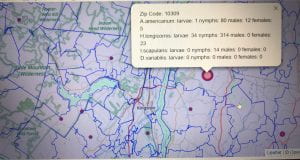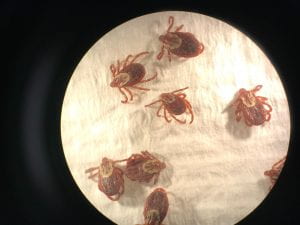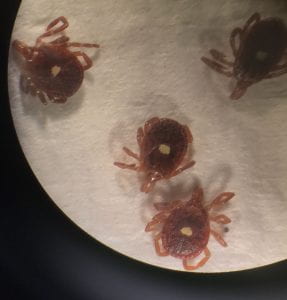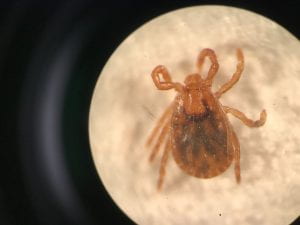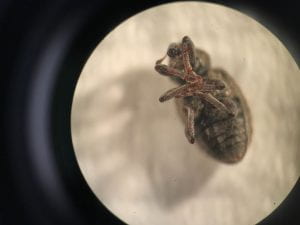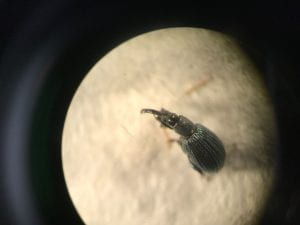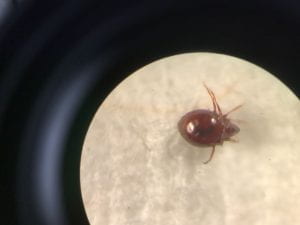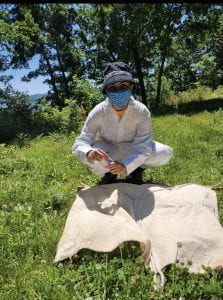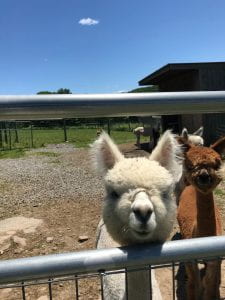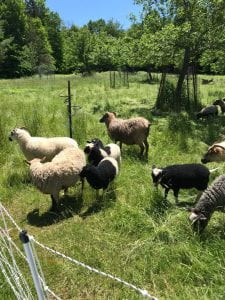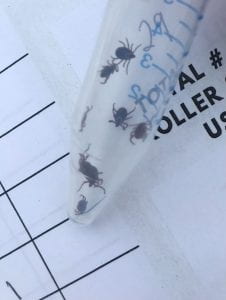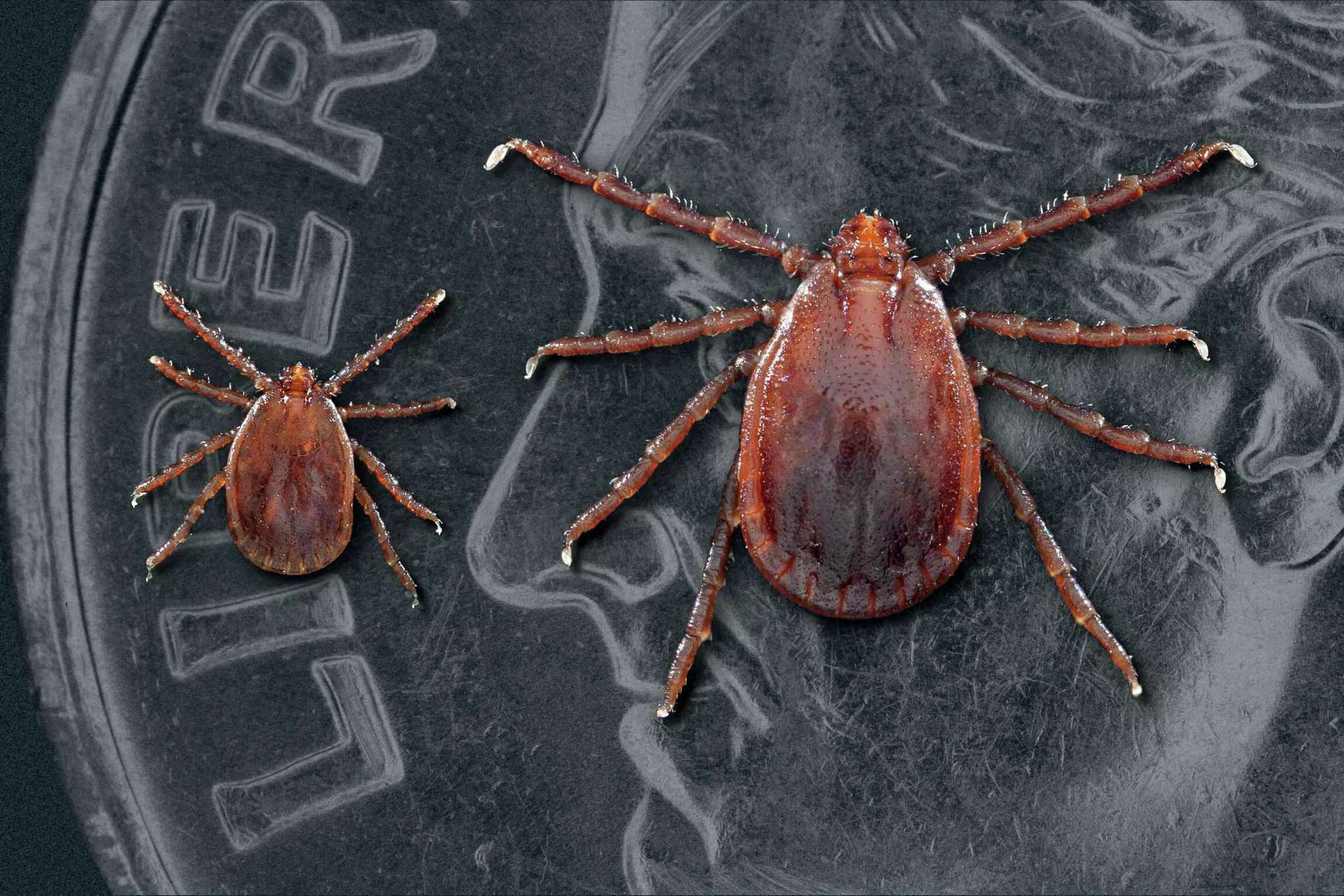Hello!
This week is the last official week of my internship, and everything is in the finishing stages.
I finished making changes to the map, which will be up on the Tick Blitz website (New York State Tick Blitz – NEVBD Citizen Sceince (neregionalvectorcenter.com)) soon, most probably within next week. The final product shows the viewer how many of each species of tick were found in each zip code with a pie chart. Here is an example:

This internship has been a fun and interesting experience. I appreciated my first real involvement with fieldwork. It takes effort, time and money to conduct fieldwork. During Tick Blitz week, my mentor Nicole and I drove for hours to several locations each day to drag for and collect ticks. The field work was very dependent on the weather. It was rather hot and sweaty some days, while heavy rains on other days made catching ticks rather difficult. Because collecting takes time, and different conditions affect the quality and quantity of samples, it is important to transport and preserve the specimens carefully.
Identifying all the collected specimens also took time. First, I practiced using keys to identify each species, then slowly got faster as I saw each life stage and species repeatedly. It was important to identify each specimen carefully and correctly, so that the results and data are as accurate as possible.
I will continue to work on this project in the fall. The lab hopes to test the specimens for pathogens this fall. The results and their implications for public health and wildlife will be interesting to see.
I’m thankful to my mentor Ms. Nicole Foley and faculty advisor Dr. Laura Harrington for advising and supporting me throughout the internship.
